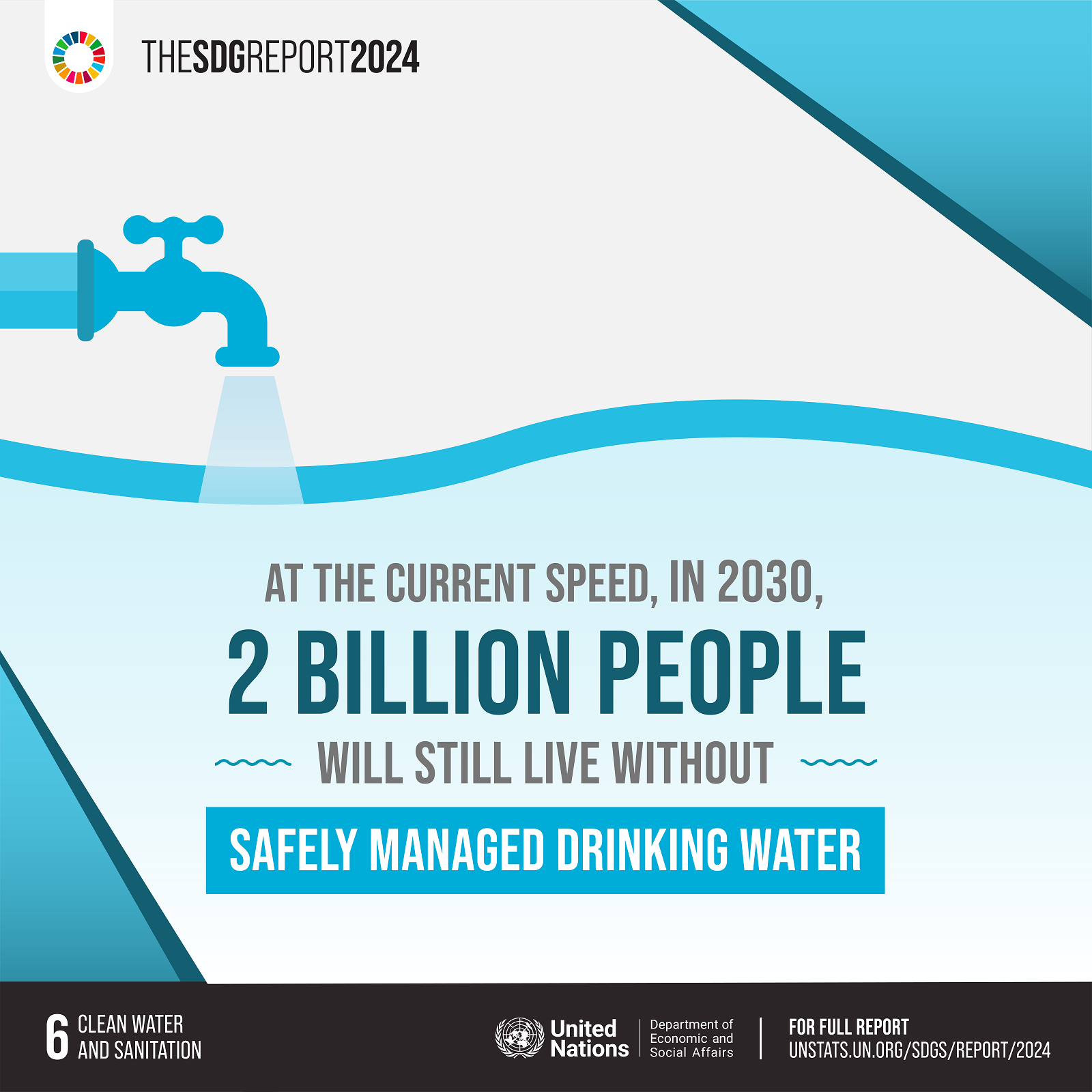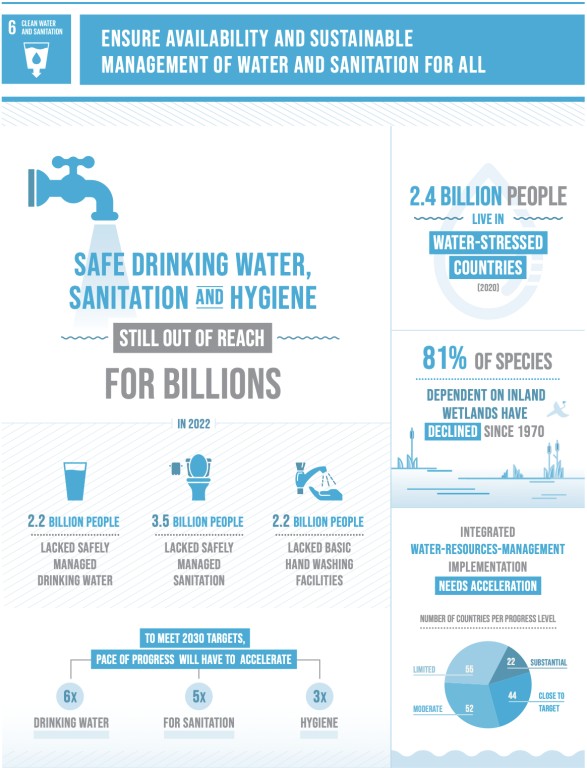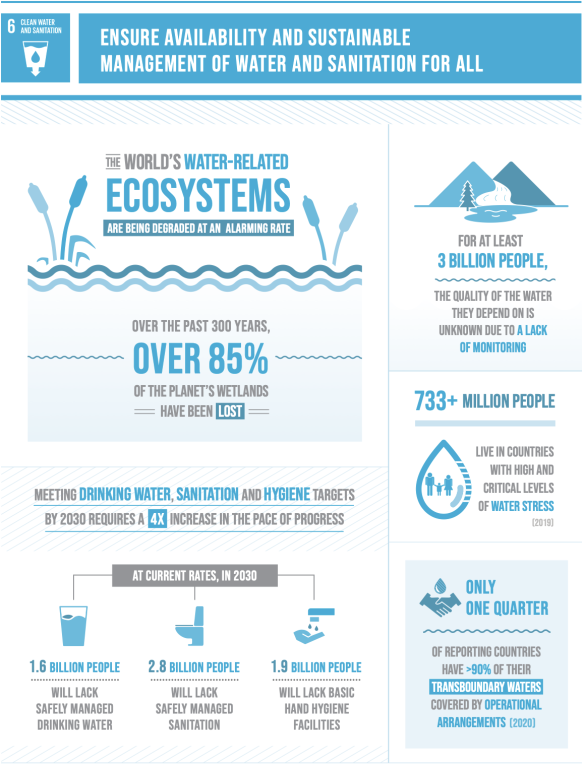
Water and Sanitation
Targets and Indicators
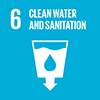
6.1
By 2030, achieve universal and equitable access to safe and affordable drinking water for all
6.1.1
Proportion of population using safely managed drinking water services

6.2
By 2030, achieve access to adequate and equitable sanitation and hygiene for all and end open defecation, paying special attention to the needs of women and girls and those in vulnerable situations
6.2.1
Proportion of population using (a) safely managed sanitation services and (b) a hand-washing facility with soap and water

6.3
By 2030, improve water quality by reducing pollution, eliminating dumping and minimizing release of hazardous chemicals and materials, halving the proportion of untreated wastewater and substantially increasing recycling and safe reuse globally
6.3.1
Proportion of domestic and industrial wastewater flows safely treated
6.3.2
Proportion of bodies of water with good ambient water quality

6.4
By 2030, substantially increase water-use efficiency across all sectors and ensure sustainable withdrawals and supply of freshwater to address water scarcity and substantially reduce the number of people suffering from water scarcity
6.4.1
Change in water-use efficiency over time
6.4.2
Level of water stress: freshwater withdrawal as a proportion of available freshwater resources

6.5
By 2030, implement integrated water resources management at all levels, including through transboundary cooperation as appropriate
6.5.1
Degree of integrated water resources management
6.5.2
Proportion of transboundary basin area with an operational arrangement for water cooperation

6.6
By 2020, protect and restore water-related ecosystems, including mountains, forests, wetlands, rivers, aquifers and lakes
6.6.1
Change in the extent of water-related ecosystems over time

6.a
By 2030, expand international cooperation and capacity-building support to developing countries in water- and sanitation-related activities and programmes, including water harvesting, desalination, water efficiency, wastewater treatment, recycling and reuse technologies
6.a.1
Amount of water- and sanitation-related official development assistance that is part of a government-coordinated spending plan

6.b
Support and strengthen the participation of local communities in improving water and sanitation management
6.b.1
Proportion of local administrative units with established and operational policies and procedures for participation of local communities in water and sanitation management
Progress and Info
Despite some progress, billions of people still lack access to drinking water, sanitation and hygiene. Water use efficiency, although increasing globally, remains low in most countries, and water stress continues to be severe in several regions of the world. The implementation of integrated water resources management is advancing slowly, with transboundary water cooperation remaining limited despite the large number of countries sharing water resources. Achieving Goal 6 requires global commitment to ensure water security for all while protecting the planet’s water resources. The Special Envoy of the Secretary-General on Water, appointed in 2024, advocates the sustainable management of freshwater resources for accelerated implementation of the Goals. The United Nations System-wide Strategy for Water and Sanitation is focused on governance frameworks, financial resources, data, technology and innovative tools for Goal 6 and supporting preparations for the 2026 United Nations Water Conference to Accelerate the Implementation of Sustainable Development Goal 6: Ensure availability and sustainable management of water and sanitation for all.
Targets 6.1 and 6.2 - From 2015 to 2024, the population using safely managed drinking water, safely managed sanitation and basic hygiene services increased from 68 to 74 per cent, from 48 to 58 per cent and from 66 to 80 per cent, respectively. However, in 2024, 2.1 billion people were without safely managed drinking water, 3.4 billion without safely managed sanitation and 1.7 billion without basic hygiene services. In schools around the world in 2023, 447 million children lacked a basic drinking water service, 427 million lacked a basic sanitation service, and 646 million lacked a basic hygiene service.
Target 6.3 - Estimates based on data for 129 countries covering 89 per cent of the world’s population suggest that the proportion of domestic wastewater that is safely treated was 56 per cent in 2022 (no change since 2020).
Target 6.4 - From 2015 to 2022, global water use efficiency improved from $17.5/m3 to$21.5/m3, a 23 per cent increase. However, 57 per cent of countries still face challenges, with low efficiency of below $20/m3. Globally, water stress showed little change from 2015 to 2022. Water stress varies significantly across regions, with Northern Africa and Western Asia as well as Southern and Central Asia facing extreme scarcity.
Target 6.5 - Global progress in implementing integrated water resources management remains slow – the level of implementation was 49 per cent in 2017, 54 per cent in 2020 and 57 per cent in 2023. While 153 countries share transboundary waters, only 43 countries have operational arrangements in place for 90 per cent or more of these waters, and more than 20 countries lack any such arrangements.
Target 6.a - Official development assistance (ODA) disbursements to the water sector declined slightly, from $8.9 billion in 2022 to $8.7 billion in 2023, but remained higher than disbursements in 2020 and 2021, which were the lowest levels since 2015. ODA commitments to the water sector decreased more substantially, from$11.4 billion in 2022 to $10.2 billion in 2023.
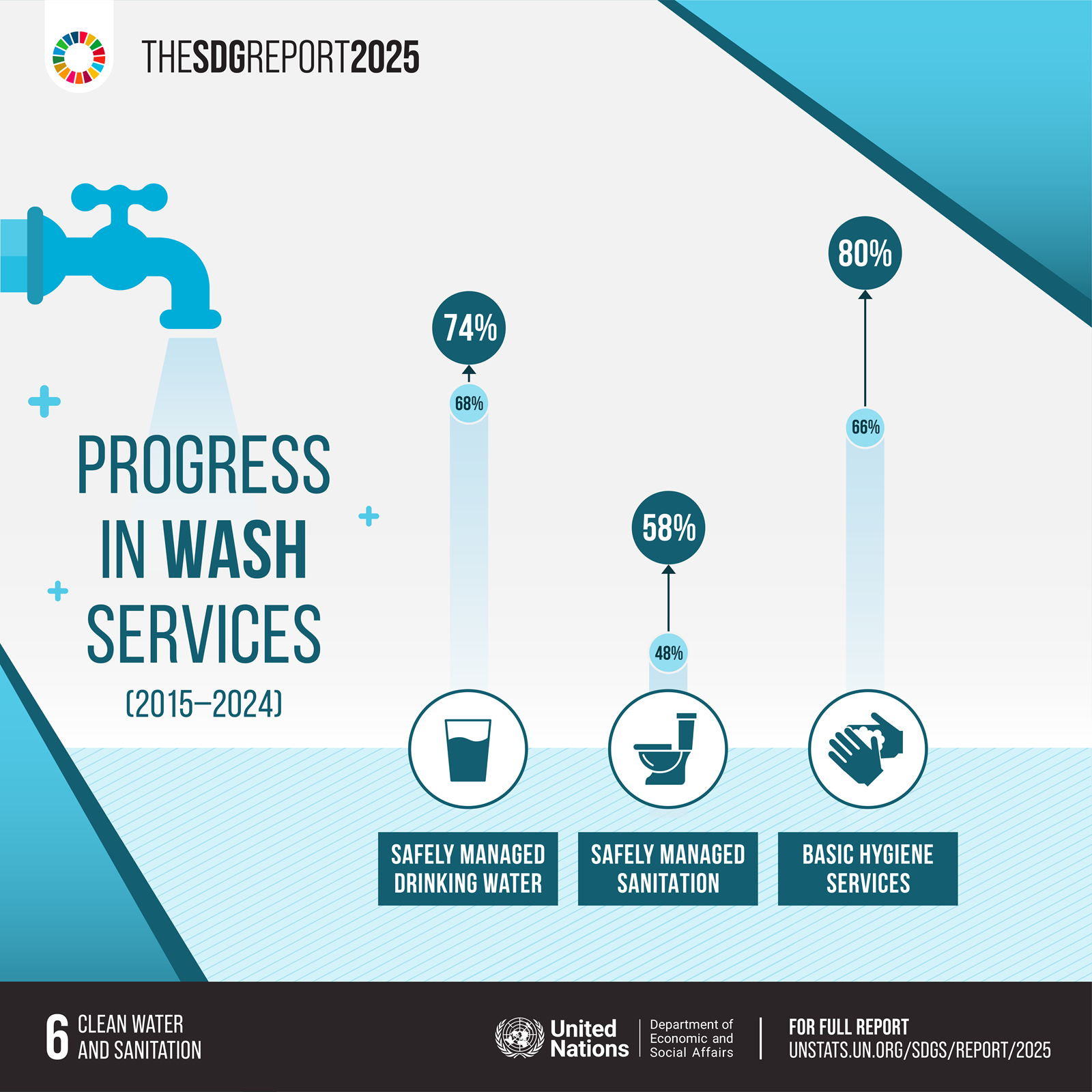
For more information, please visit: https://unstats.un.org/sdgs/report/2025/
More details on SDG 6 in 2025: https://unstats.un.org/sdgs/report/2025/Goal-06/
The 2025 Extended Report on SDG 6 can be found here: https://unstats.un.org/sdgs/report/2025/extended-report/Extended-Report-2025_Goal-6.pdf

